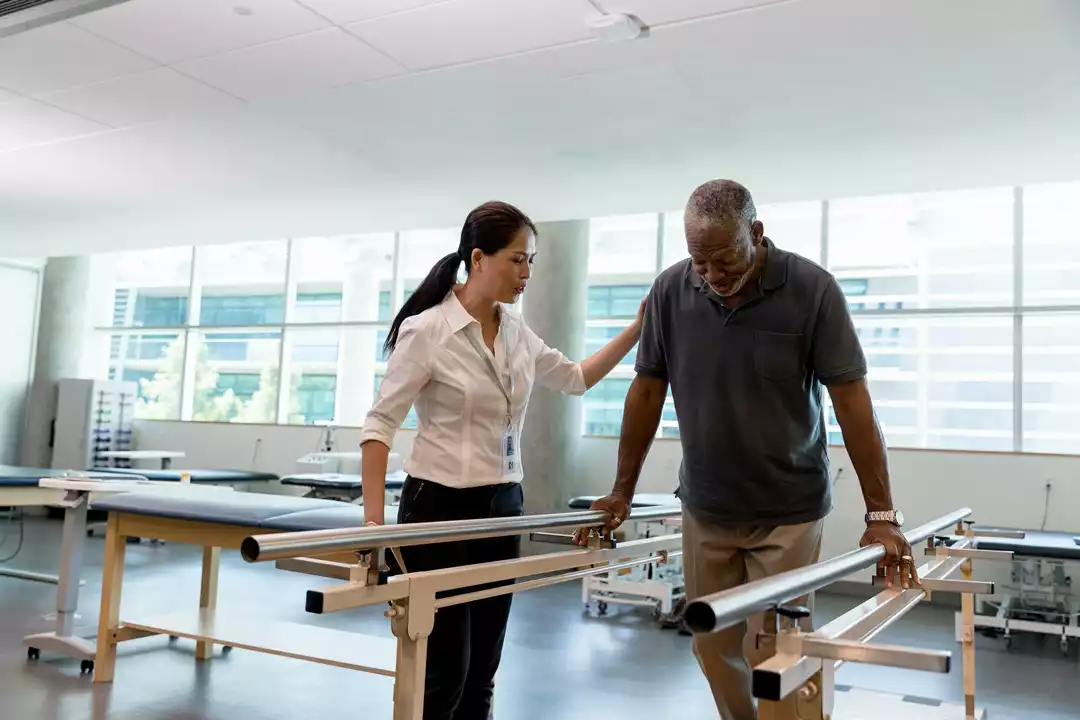Understanding the Impact of Stroke on Balance and Coordination
Before diving into the specifics of how stroke affects an individual's balance and coordination, it's important to have a clear understanding of what stroke is and how it impacts the brain. Stroke occurs when blood flow is disrupted to a part of the brain, causing brain cells to die. This can result in a wide range of physical and cognitive impairments, including difficulties with balance and coordination.
In this article, we'll explore seven key aspects of how stroke impacts balance and coordination, and discuss potential treatments and strategies for improving these crucial functions in stroke survivors. So let's get started!
The Role of the Cerebellum in Balance and Coordination
The cerebellum is a region of the brain that plays a critical role in maintaining balance and coordinating movement. When stroke impacts the cerebellum, it can lead to significant challenges in these areas. The cerebellum is responsible for fine-tuning motor movements, ensuring that muscles work together smoothly and efficiently. Damage to this part of the brain can cause a variety of issues, including unsteady gait, shaky movements, and difficulty coordinating complex motor tasks.
It's important to note that not all strokes affect the cerebellum. Depending on the location of the stroke, different areas of the brain may be impacted, resulting in a wide array of symptoms. However, when the cerebellum is involved, the consequences for balance and coordination can be particularly pronounced.
Postural Instability After Stroke
Postural instability, or difficulty maintaining an upright position, is a common issue for stroke survivors. This can be particularly challenging when it comes to standing, walking, and performing other daily tasks that require balance. Postural instability can result from damage to various areas of the brain, including the cerebellum, the basal ganglia, and the brainstem. In some cases, postural instability may be due to weakness in the muscles on one side of the body, as stroke often affects one side more than the other.
Regardless of the cause, postural instability can significantly impact a stroke survivor's quality of life, as it can lead to increased risk of falls, difficulty navigating the environment, and a reduced ability to participate in daily activities.
Ataxia: A Common Consequence of Stroke
Ataxia is a term used to describe a lack of muscle coordination, which can make it difficult for stroke survivors to perform tasks that require precise movements. Ataxia can manifest in various ways, including difficulty walking, issues with hand-eye coordination, and problems with speech. When ataxia is present after a stroke, it is often due to damage to the cerebellum or the connections between the cerebellum and other parts of the brain.
Ataxia can be particularly frustrating for individuals recovering from stroke, as it can make even simple tasks, like picking up a glass or writing, challenging to complete. However, with targeted therapy and practice, many stroke survivors can see improvements in their coordination and ability to perform daily tasks.
Proprioception and Stroke Recovery
Proprioception is the body's ability to sense its position in space, and it plays a crucial role in maintaining balance and coordinating movement. When stroke damages the brain's ability to process proprioceptive information, it can lead to difficulties with balance and coordination. For example, a stroke survivor with impaired proprioception may struggle to know where their feet are in relation to the ground, making it difficult to walk safely and confidently.
Improving proprioception after stroke often involves targeted exercises that help retrain the brain's ability to process and interpret sensory information from the body. This can include activities like balancing on one foot, walking on uneven surfaces, or practicing weight shifting.
Addressing Muscle Weakness and Imbalance
One of the most common consequences of stroke is muscle weakness, which can significantly impact an individual's balance and coordination. In many cases, stroke survivors experience weakness on one side of the body, which can make it difficult to maintain an upright posture and coordinate movements effectively. Additionally, muscle weakness can lead to muscle imbalances, further complicating the recovery process.
Physical therapy is an essential component of addressing muscle weakness and imbalance after stroke. A trained physical therapist can guide stroke survivors through targeted exercises designed to strengthen weakened muscles, improve range of motion, and restore functional movement patterns.
Vestibular Dysfunction and Stroke
The vestibular system, located in the inner ear, plays a critical role in maintaining balance by providing the brain with information about head position and movement. When stroke impacts the areas of the brain responsible for processing vestibular information, it can lead to dizziness, vertigo, and balance issues. Vestibular dysfunction can make it difficult for stroke survivors to maintain their balance, particularly when changing positions or moving their head.
Vestibular rehabilitation therapy, a specialized form of physical therapy, can help address vestibular dysfunction after stroke. This type of therapy focuses on helping the brain adapt to changes in the vestibular system and improving balance through targeted exercises and activities.
Conclusion: The Path to Improved Balance and Coordination
Stroke can have a profound impact on an individual's balance and coordination, making daily tasks and activities challenging to navigate. However, with the right support and targeted interventions, many stroke survivors can see improvements in these crucial functions. By addressing issues such as muscle weakness, proprioceptive deficits, and vestibular dysfunction, stroke survivors can work towards regaining their independence and enhancing their overall quality of life.


Crystal Newgen
Balance rehab is definitely a marathon, not a sprint.